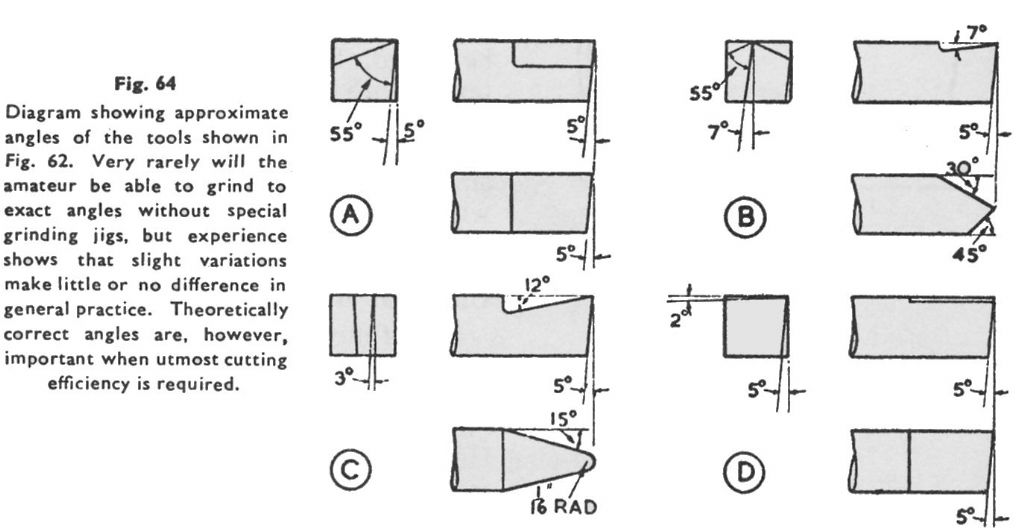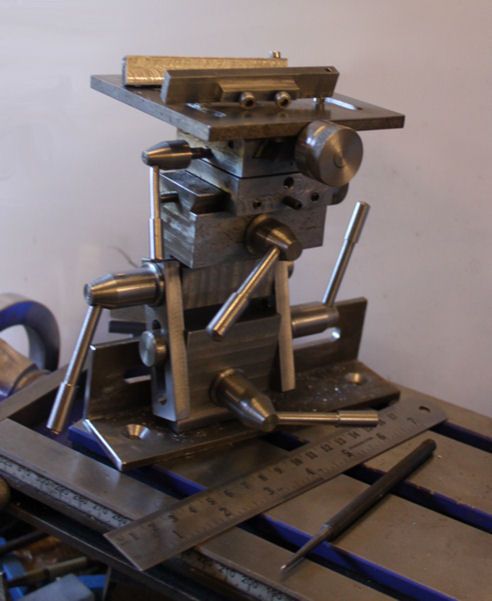Wolfie,
For most of my routine turning I use inserted tip tooling. I have rather a lot of holders probably far more than I need – but the most useful ones are these:
SCLCR holder, takes CCMT tips; the most used, basic knife tool, will do turning and facing.
SCLCR boring bar – similar shape to above, but on longer shank and geometry optimised for boring
Q-cut parting tool – the best parting tool I have used, by a country mile.
You can find most of these on the Greenwood website, **LINK**
A word about quality and price. The Greenwood prices are high, but the special offers are a good deal less. You can get Glanze tools much cheaper from Chronos; the quality of the holders is OK – not as good as the Greenwood ones, but acceptable. The tips seem to be much more brittle than the more expensive ones, so I don't like them. The Greenwood site is well worth reading for the helpful guidance.
For really fine shaving cuts, a good sharp HS toolbit is slightly better – not as much as some would have you believe, I have done tests on mine and found a 0.5 thou cut with carbide is relatively easy, less than this and they are inclined to rub. I generally have a conventional knife tool and a 45 degree chamfering tool in HS set up for both my lathes.
Other points:
(1) Ady suggests sharpening TC tips on a green grit wheel. Don't waste your time, green grit is a total PITA, get a diamond wheel, they are cheaper, work better and are virtually indestructible:
**LINK**
Use a cup wheel for preference.
(2) You can find toolholders and tips quite cheaply on eBay – but take care, a lot of them are surplus industrial-sized tools and may not fit on your lathe. If you do find some common tips, for example CCMT 0602 or 0604, from a good maker (e.g. Sandvik) at a good price, snap them up even if you have to buy 10.
(3) You can get holders which use the obtuse corners of tips for rough turning, they won't cut to a shoulder but will happily chew massive cuts off in straight turning.
(4) Even carbide tips can be freshened up with a diamond hone.
(5) Your best course may be to buy a cheap set from Chronos and then experiment to see how you get on – for example:
**LINK**
I think you have a Myford 7 – if so, the 10 mm size will be the one for you.
David
Edited By David Littlewood on 16/07/2012 12:49:03
Wolfie.


 5) Your best course may be to buy a cheap set from Chronos and then experiment to see how you get on – for example:
5) Your best course may be to buy a cheap set from Chronos and then experiment to see how you get on – for example:




